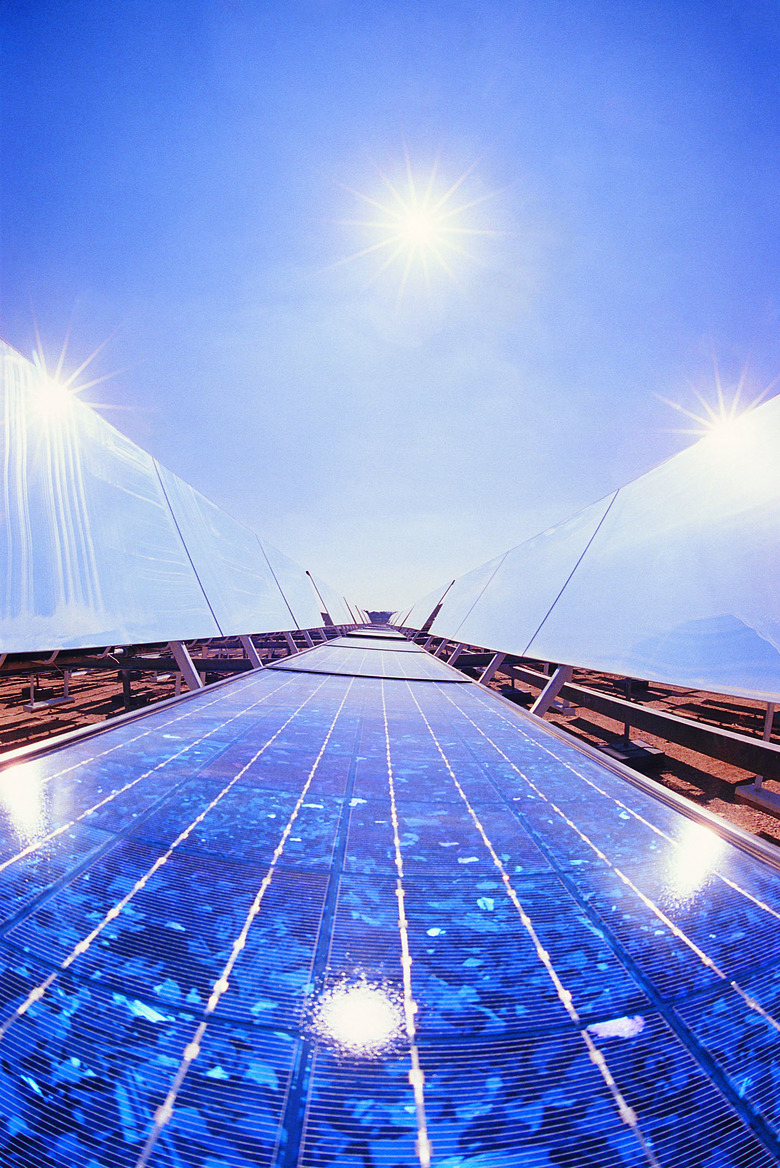The Case For & Against Solar Energy
Every moment, enough solar energy hits the Earth to meet the world's energy needs 10,000 times over. And nobody pays for it; it's just there, and humanity will be able to tap it for about the next 5 billion years. Solar energy promises to convert that free fuel to energy. Even better, this energy source doesn't come at a cost in generation of greenhouse gases. Developing solar energy may seem like a no-brainer, but there are some legitimate concerns about the capabilities of solar energy and its practical implementation.
The Arguments for Solar
The Arguments for Solar
A solar array on your home is like installing a generator for which you never have to pay for fuel. Because there's no combustion involved in generating solar energy, its operation produces no pollutants. Solar power systems also have very low maintenance requirements, and typical warranties will cover a system for 25 years. And sunlight is abundant and ubiquitous, especially in warmer climates.
Cost
Cost
One of the strongest arguments for not adopting solar energy immediately is that the cost is still too high. Although there are different ways for calculating costs, and the alternative methods don't compare easily with one another, photovoltaic solar arrays are still more expensive than conventional energy sources. The New Hampshire Department of Environmental Services, for example, quotes solar costs of about 18 cents a kilowatt-hour, compared to about 10 cents for coal and 8 cents for natural gas. Obviously, since solar energy fuel costs nothing, those costs are primarily related to the high initial purchase prices of solar energy systems.
Feasibility
Feasibility
Solar cells only generate power when the sun is shining on them. Because solar panels are expensive, you want to be sure you put them in places where you'll get the most bang for your buck. Those are places where there are many clear days. The optimum locations in the United States are in the desert areas of the Southwest. But those are also the areas with the least developed infrastructure and the largest distances between populated areas. If you have to build whole new substations and transmission lines, the cost gets even higher.
Storage
Storage
Because solar energy systems only produce energy during sunlight hours, you have three options if you want to rely on solar energy. First, change people's habits so they drastically reduce their energy usage during evening and morning hours. Second, develop methods for storing solar energy so that it's available even when the sun is down. Third, build additional power plants to fill the energy gap in times of darkness.
The first option is extremely unlikely, the second is technologically challenging and the third makes the economics of solar energy even more problematic. One way or another, the inconstancy of solar power is an issue that must be addressed to make it a reasonable option.
Environmental Costs
Environmental Costs
Although solar energy is environmentally friendly on its face, there are environmental impacts in the places where large solar plants are situated. The National Parks Conservation Association, for example, warns the public that the American Southwest consists of "wonderlands, not wastelands." Deserts are homes to hundreds of species, and there is no question that large solar plants have an impact on those ecosystems. Again, it's an issue that must be addressed when considering the implementation of large solar plants that can be built with economies of scale.
Cite This Article
MLA
Gaughan, Richard. "The Case For & Against Solar Energy" sciencing.com, https://www.sciencing.com/case-against-solar-energy-19638/. 24 April 2017.
APA
Gaughan, Richard. (2017, April 24). The Case For & Against Solar Energy. sciencing.com. Retrieved from https://www.sciencing.com/case-against-solar-energy-19638/
Chicago
Gaughan, Richard. The Case For & Against Solar Energy last modified March 24, 2022. https://www.sciencing.com/case-against-solar-energy-19638/
